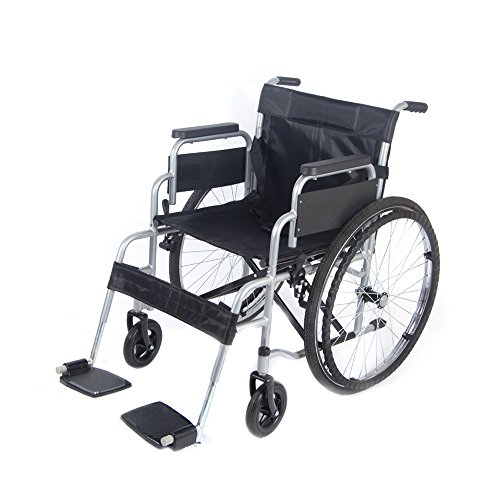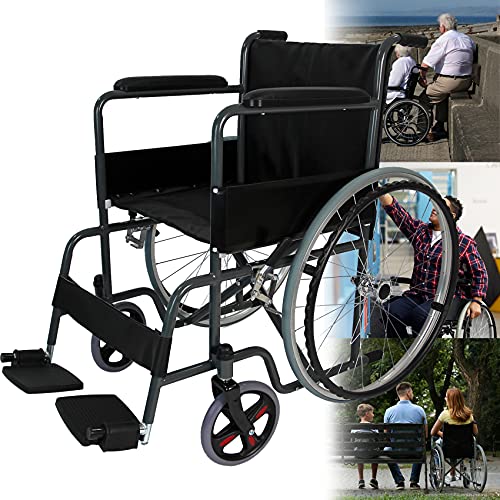5 Killer Quora Answers To How To Self Propel A Wheelchair
페이지 정보

본문
 how to self propel a wheelchair to Self Propeller a Wheelchair
how to self propel a wheelchair to Self Propeller a WheelchairLearning to self-propulse wheelchairs opens up a whole new world of independence. But, it takes practice and a proper body posture to achieve this.
A precise grip and method of pushing is essential for the correct body positioning. This article will focus on these skills and other important aspects of wheelchair propelling.
Hand Positioning
Properly pushing a wheelchair hands is an essential aspect of self propelled wheelchair-propulsion. It's best to start with accuracy and move towards speed. It's also a good idea to squat while pushing to increase the stability and comfort, particularly for those who have lower back or upper body limitations. Hands should be set to match the speed of the wheel. You should also push using both hands, but without placing thumbs on hand-rims. This is a common omission which decreases efficiency and can increase the force required per stroke.
To avoid contact with the rear wheel, the path of recovery for the hands must be in an "equilateral" pendular pattern beneath the hand-rims. This helps reduce shoulder strain, as does keeping the duration of each stroke and the number of cycles to an absolute minimum.
For surfaces that are more difficult to maneuver, it is sometimes advised that the user of a wheelchair use long strokes with a full recovery (like the hand positioning on a clock). This helps to minimize shoulder injuries due to repeated motion, but can increase the load on shoulders in each cycle.
It is also possible to minimize shoulder injuries by keeping the same position while driving and braking. If the person using the wheelchair is able to keep a steady rhythm during both movements it will be much easier to manage the forces that are applied and adjust for variations in the terrain.
On slippery or muddy surfaces, it is important to lean slightly forward while moving to stop the wheels from sinking into the ground and falling over. It is worthwhile to test different levels of trunk lean to find the ideal balance between not enough and too much. Like any new skill, regular training will help you gain efficiency and confidence. Wheelchair propulsion is a transformative ability for people who have mobility problems. With the right technique, the right equipment and a bit of education anyone can learn how to propel their own manual wheelchair effortlessly! This entry was posted under News and was tagged with wheelchair.
Foot Positioning
It is crucial to ensure that the user's feet are correctly positioned to ensure stability. It is not always ideal for a wheelchair with feet that are not close enough since this makes it difficult to self propelled wheelchairs for sale uk-propel. Sometimes, it is essential for the wheelchair to have this configuration to maneuver over difficult terrain. For example, if the client is descending an extremely steep ramp or even across some of our wonderful National Parks or beaches, the wheelchair needs to have wheels that can move up and over them in a manner that allows the person to move themselves forwards. The front wheels should be positioned in the manner shown below.
When the client has this setup they can simply grasp the wheels' rims and push them in a direction to advance. This is a very slow and complicated process that requires a lot upper body strength.
Wheelies are also important so that the client can overcome obstacles such as curbs or even people. In this position, the user will place their left foot on top of the right, so that they can lift themselves up and then over the obstacle. The user will then move their right leg upwards and over the obstacle while pushing with their left hand. This is known as a crab walk, and it is an effective method of moving a wheelchair over some of our most challenging terrain.
They are a great choice for injured or disabled people who wish to move around without needing help. They are compact, lightweight self folding mobility scooters and foldable, so they take up less space in the home than other mobility aids. They can be converted into powerchairs by using accessories like the E-Motion, giving the user the freedom of being able to use their chair while enjoying the benefit of electric assistance when needed.
Braking
The ability to self propel in a wheelchair is an essential ability for those with mobility challenges. They can maneuver through a variety of environments and terrains on their own. It also helps to build strength in their shoulders and upper arms.
To move a wheelchair forward, the user should apply pressure to the rim of one hand while pulling up on the opposite side. The push-pull motion creates momentum that moves the wheelchair in the desired direction. The speed at which the wheelchair is propelled can be controlled by applying more or less pressure on the rims, or using hand brakes if they are fitted with them.
The ideal cycle for pushing should last at least three hours. This will reduce the amount of time that the shoulder is strained and reduces the risk of injury due to repetitive strain. The width and size of the back wheels will influence the speed at which a wheelchair gets moved. Larger wheels require more force to move, whereas smaller wheels are easier to maneuver. Wheelchairs can also be designed to have camber, which aligns the rear wheels with biomechanics and enhances the stability in the lateral direction.
Wheelchair users who wish to improve their propelling techniques should practice in a secure location, like a parking area or a hall without people. The goal is to develop long slow strokes, allowing the wheelchair to coast between strokes.
It is also essential for the user to practice moving while moving, like weaving around objects or making turns. One way to practice this is by weaving across cones, and then slowly moving into straight-line motion. The more one practices the more comfortable it will be for them to achieve this.
Self-propelled wheelchairs are a fantastic tool that can allow people to be active and still enjoy the activities they used to. They provide independence and can be a great method to make friends or go to the movies, or travel. When you learn how to use a wheelchair properly you will be able to continue or get back your independence and get to the place you want to be.
Stability
ultra lightweight self propelled wheelchair-propelling wheelchairs permit wheelchair users to be self-sufficient and to go wherever they wish without the need to rely on others. However, it requires a good level of upper body strength to push the wheel along flat surfaces, and even up small hills. This is the reason why many wheelchair users choose to use an attendant controlled chair (also known by the name attendant propelled) like the Action3 NG, or ErgoLite 2 and are driven.
The act of grasping the hand rims in order to move in a manual wheelchair is one of the most important aspects to master for optimum efficiency and ease. We often find that clients who are using this type of chair are likely to have their hand rims too far forward, which means they have to reach further backward with their arms. This is not a good biomechanical strategy and can lead over time to shoulder strain.
The best hand-propulsion pattern is a semicircular pattern, where the client alternates between the push phase of the wheelchair and the recovery phase. The push phase requires the client to push down on the casters, which is done with a lot of small strokes. This push pattern also helps to strengthen the shoulder muscles and ensure an active range of motion.
The client should move their hands along the rims until they come into contact with the casters again. This allows for longer strokes, and reduces friction during the recovery phase. Some wheelchair users slide their hands along the rims in a smooth circular motion during this time, but this isn't as efficient and could cause wear on the rims.
The position of the rear wheels to allow self-propulsion is another important aspect of stability. If the wheel is placed too far to the left, a wheelchair can easily slide. This can be difficult for them to navigate around obstacles and it's not a good idea for shoulder injuries. In order to determine which wheel is suitable for a particular client, we need to assess their strength, range of motion and muscle tone, their the state of their orthopedics and other aspects during the seat assessment.

- 이전글The Idiot's Guide To Highstakespoker Explained 24.12.04
- 다음글QuikHeat: Comparing It to Other Space Heaters 24.12.04
댓글목록
등록된 댓글이 없습니다.
